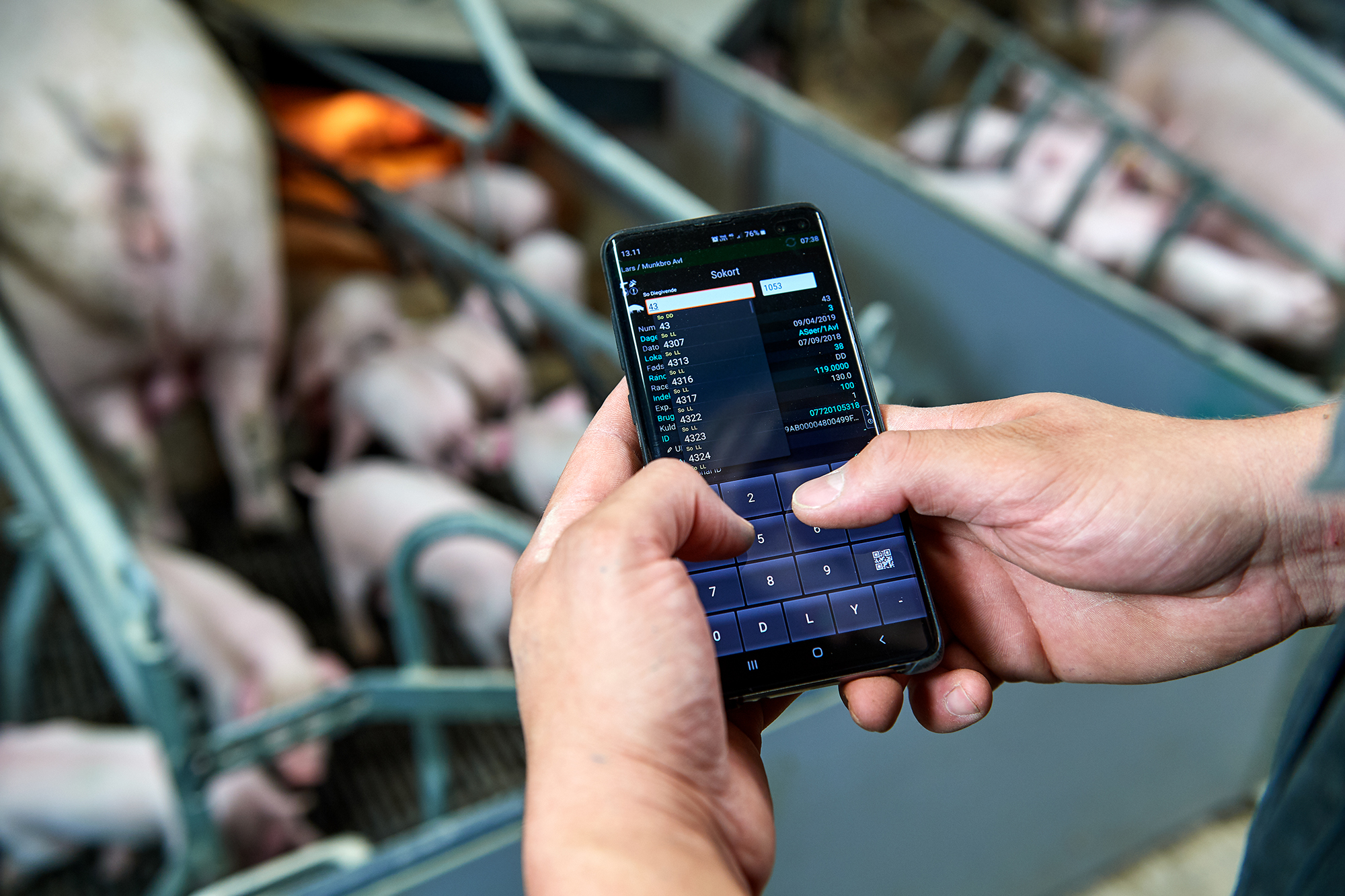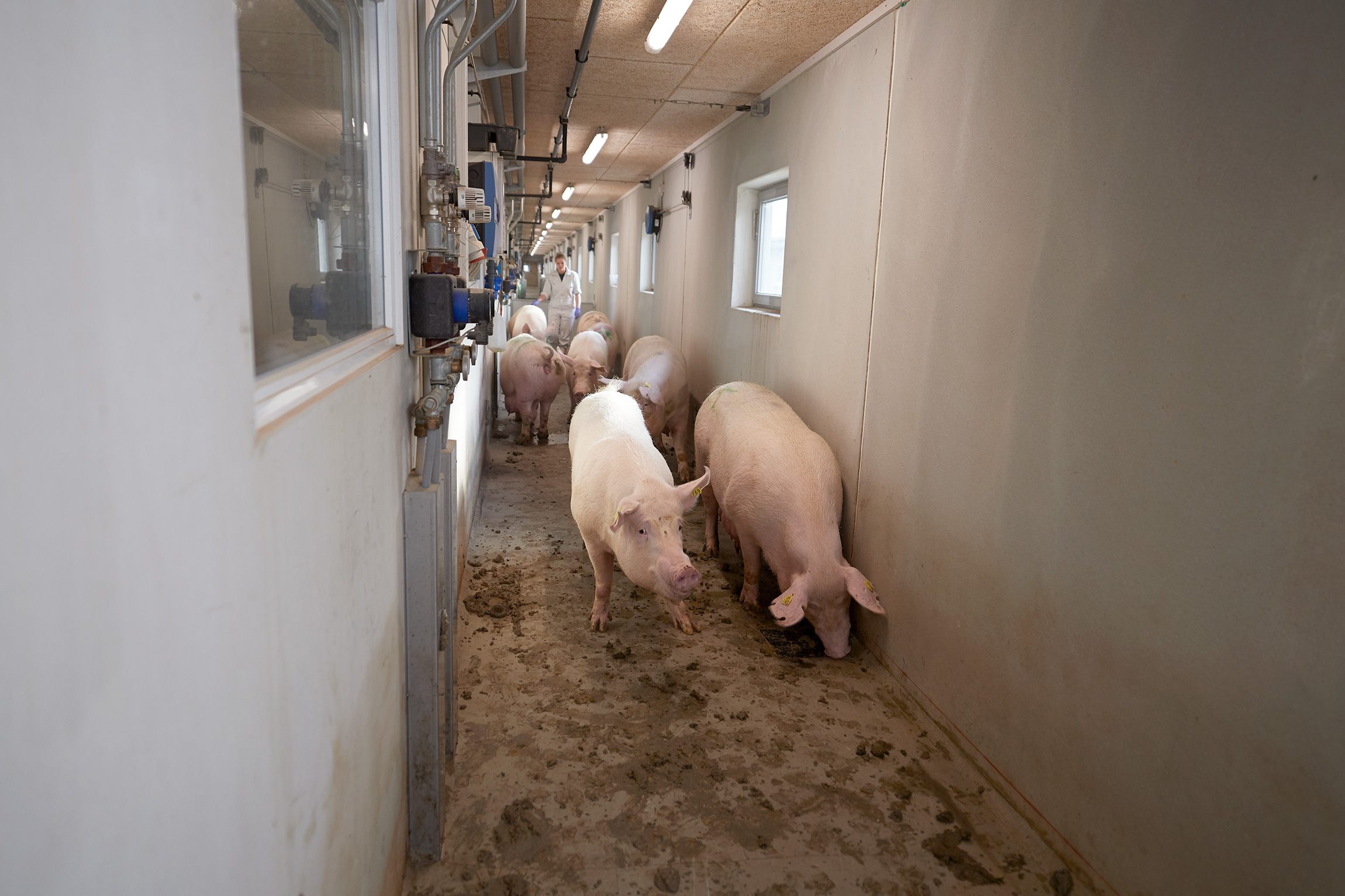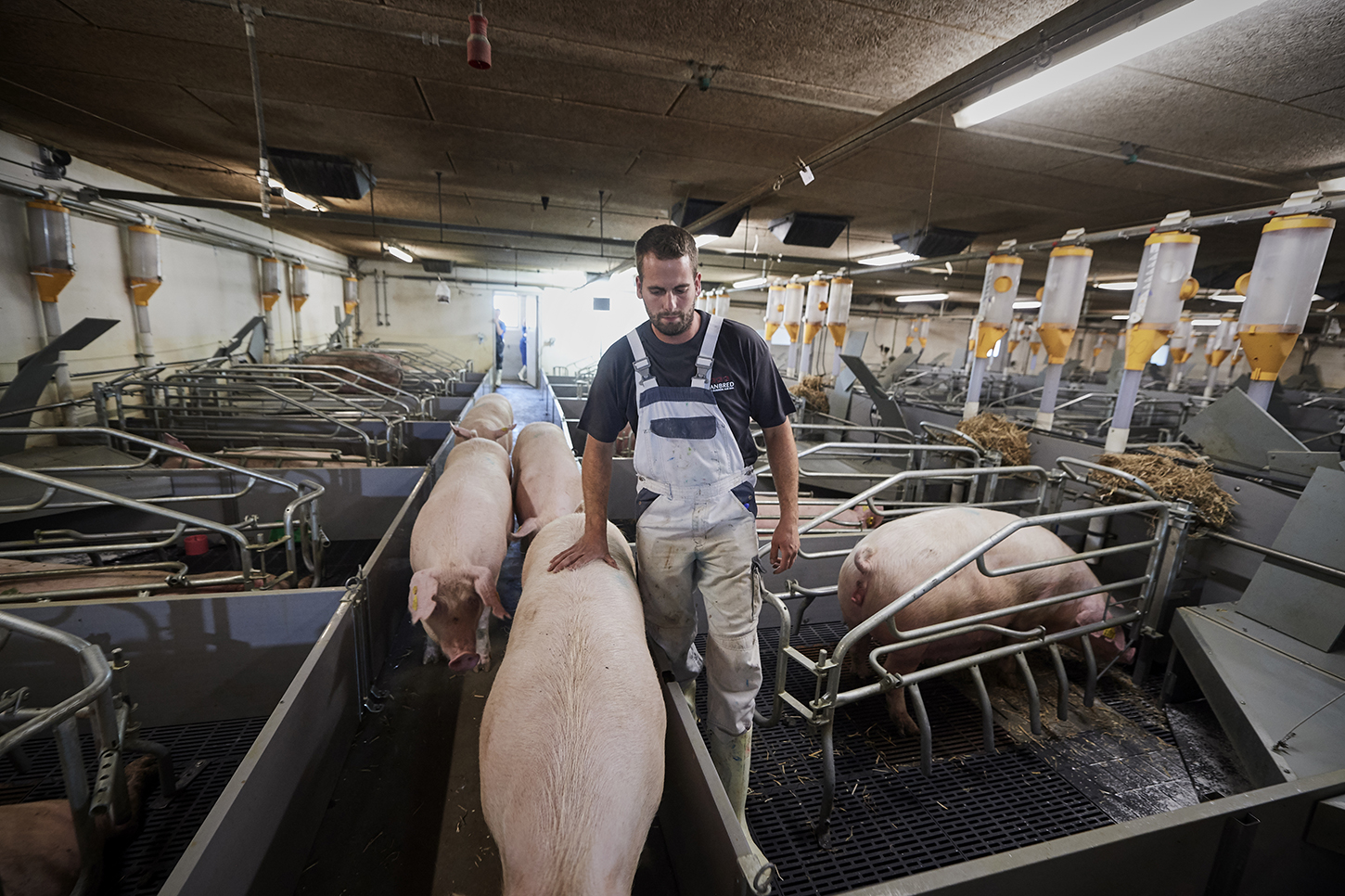Production planning
Plan the production of breeding litters
The production of breeding animals requires planning, management, and optimal handling throughout all housing sections, regardless of the herd type. There are various aspects to consider during the planning of the production of breeding animals. The production type of the herd in question will play a significant role when developing the strategy.
|
|
|
Systematise the production of breeding animals
Overall, focus points and the planning of breeding litters are similar in the different herd types. It is the main goal, laid out for each production that must be kept in mind at all times. But this is also where the differences between herd types become obvious – the goal must set the tone for further planning, so the production is as optimised as possible for the specific herd.
Optimal production of breeding animals depends, to a large extent, on the productivity and the numbers put into the calculations. This is also a crucial element in the planning phase, where some important key figures should always be taken into account:
- Farrowing rate – how many mating’s should be planned?
- Litter size, incl. the expected number of breeding animals per litter, what is the expected output?
- Mortality/utilisation rate, including internal selection criteria, how large a rejection rate are we expecting?
|
|
|
These key figures are the framework in the production, which should also consider the purpose of the production – are we talking about boars used for AI, distribution of gilts, or on-farm replacement?
Nucleus herds
The goal for all nucleus herds is based on generating as much genetic progress as possible.
The DanBred breeding system is focused on maximising genetic progress and therefore trumps general productivity and management protocols. It is not about optimising replacement rates or the optimal age of gilts at first insemination. It is about minimising the generation interval, and the replacement should be solely based on the index level within the herd and on individual animals.
|
|
|
The product from nucleus herds is the production of purebred boars for AI-stations and purebred gilts for their own replacement. The sale of excess animals is a bonus. Planning this type of production is always based on a composition of litter quotas and the genetic progress within the population.
| Strategy/herd type | Nucleus herds |
|---|---|
| Composition, sows | 100 % purebred |
| Composition, mating | 100 % purebred |
Optimal planning in nucleus herds is about ensuring:
- Stable production (including regular batches)
- Low generation interval
- Various use of boars within quotas set in each breed
- Proactive decision on selection and de-selection within the herd.
|
|
|
Multiplication herds
The multiplication herds also play an important role in generating genetic progress, but the focus is primarily based on the distribution of the genetic progress to the customers. Genetic progress is distributed down through the supply-chain, by the distribution of high-quality gilts delivered to the customers. High quality is a combination of both exterior and index levels.
Thus, a multiplication herd is focused on a combination of genetic progress and increased productivity. This means that a high index level combined with the herd’s focus on produced gilts per litter should be key elements in setting forward a strategy in a multiplication herd. A large amount of high-quality gilts per litter is of high value to both the multiplier as well as the customers.
|
|
|
The product from the multiplication herds the production of crossbred gilts also referred to as F1-production or hybrid gilts. A product based on customer needs and value throughout the supply chain. However, this also means that planning the production in such a herd, is a different matter. Planning must take both production of crossbred and purebred gilts into account, as the herds’ own replacement and maintenance are vital to further ensure high-quality gilts for the customers.
| Strategy/herd type | Multiplication – closed nucleus | Multiplication – purchased nucleus |
|---|---|---|
| Composition, sows | 100 % purebred | 100 % purebred |
| Composition, mating | 10 – 15 % purebred 85 – 90 % crossbred |
100 % crossbred |
Prerequisites for optimal flow of gilts in multiplication are:
- Annual replacement at app. 75 % – higher if the index level should increase
- Purebred matings at app. 10-15 %
- Various use of boars for purebred litters – maximum use of 15 % of the litters.
- Monitoring of the gilt production – know your production and productivity.
However, keep in mind that the baseline and key figures are individual in each herd. These figures should merely be considered as a guideline principle. The figures should always be assessed individually during the planning phase, and adjusted on an ongoing basis according to the actual situation within production and the market demands.
Herds with GenePro – In house breeding
In general, the same standards should apply to the production of gilts, whether we are looking at on-farm replacement or purchased gilts. The production of gilts in herds with GenePro also requires time and resources in terms of breed management – none less time and resources are best spent when there is also an innate interest in general breeding.
The first step when planning for the production of gilts in herds with GenePro is to choose a breeding strategy within the herd. It is a question of herd type, layout, size etc. as well as the situation of the herd and also future plans and strategy for the herd and owner.
| Strategy | Criss-cross | Purchased nucleus | Closed nucleus |
|---|---|---|---|
| Approach | Based on hybrid gilts that are mated alternately with Landrace or Yorkshire. | Based on a purchased Landrace or Yorkshire nucleus. | Based on on-farm production of both Landrace and Yorkshire gilts. |
| Composition of the herd |
|
|
|
| Target group |
|
|
|
The main goal in the production of gilts in GenePro herds is based on a sufficient production of gilts for on-farm replacement. Just as with multiplication herds, the focus must be heightened on the replacement and maintenance of the herd. Genetic progress is not generated but implemented as it is a question of keeping up with the genetic progress generated in the nucleus and multiplication herds.
It is about development within the herd and ensuring a parallel development to the nucleus and multiplication herds. By ensuring this development, we will achieve optimal results with a minimal distance in index levels between herd types

Prerequisites for optimal flow of gilts in GenePro herds:
- Annual replacement at approx. 50 % – higher if needed.
- Purebred matings at approx. 8-10 % – higher if the number of rejected gilts is high.
- Monitoring of the gilt production – know your production and productivity.
|
|
|
However, keep in mind that the baseline and key figures are individual in each herd. These figures should merely be considered as a guideline principle. The figures should always be assessed individually during the planning phase, and adjusted on an ongoing basis according to the actual situation within the herd and the general market.
Ensured relationship – planning and handling throughout the sows cycle
Making sure that relationships are correct is at the core of the DanBred breeding system, and should be applied in all routines. In order for the genetic potential to be utilised, it is essential to be able to trace the origin of the animals. There are several routines and tools that can be used in everyday management, where the most important element to remember is – controlling all routines in each housing section, where registration and tagging of the animals are characteristic for the quality assurance of the breed management within each herd.
The mating unit – first step:
The first step in the production of breeding animals occurs in the mating unit. At this point, it is already necessary to heighten attention and accuracy, which is further exemplified by additional tagging and registration.
- Hanging of sow cards or pen cards with gilt and sows that are expected to be used for breeding – ensures increased attention to these animals.
- Insert a sow tag in the sow’s right ear at the first mating – providing extra identification that is linked to the animal’s DanBred ID-number.
- Only one boar is used per litter – the same boar is used for both the first and second mating.
|
|
|
- Make sure to note and register the exact boar used so there is no doubt, and it is easy to prepare the correct semen doses for the second mating.
- However, remember that it is the date of the first mating that is registered in the herds’ management program and sent to the DanBred databank.
|
|
|
- Make sure to always have two semen doses from each boar, so that all sows and gilts can be inseminated twice with the same boar. If against expectations, two doses of semen are not available the sows and gilts are only mated once – no cross-inseminations can be made.
- When the semen doses arrive from the AI station, it can be advantageous to sort the semen by boar name – in this way, there will be no surprises or doubts about the number of doses per boar. It will be easier to manage and it will be harder to accidentally have used both semen doses at one mating.
|
|
|
The most important element in the mating unit should be focusing on the animals used for breeding, both before, during and after insemination. The staff in the mating unit should have a sense of detail, as it is essential that ear tags are read correctly noted on the mating lists, and of course, registered correctly in the DanBred databank.
The gestation unit – take care of your sows:
In the gestation period, it is all about handling and management of the sows. However, the handling of sows producing breeding animals is also about registration and securing the data that forms the foundation of the breeding litters moving forward.
- Use a batch card system (or similar) – you will always have an overview of the sows that have been mated and it is possible to highlight breeding litters. At the same time, it will ease the ongoing planning in periods with a larger number of returns.
- Due diligence is essential – make sure that the sows are moved to the farrowing section according to local legislation as a minimum to ensure good animal welfare and avoid errors in registrations and relationships, in case of unintentional farrowing in the gestation unit.
- Make sure to check the sows on a daily basis – and remember to also check for missing ear tags.
|
|
|
The farrowing unit – newborn litters and their mothers
In the farrowing unit, it is time for further care and registration of the breeding litters. The litters become individual breeding animals, meaning a larger amount of individual registrations and management.
- Hanging up sow cards, when moving sows into the farrowing unit – make sure to double-check the match between ear tags and sow cards.
- Individual identification of piglets from day 1 – use LP5 tags or day-1 ear tags
- No litter equalisation before the piglets are tagged and can be identified.
|
|
|
























